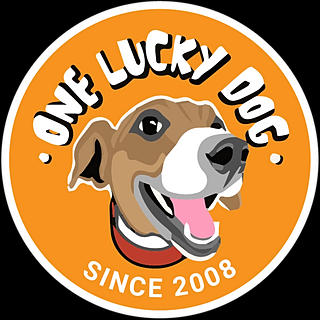Socialization versus training
- Linda Healy
- May 16, 2020
- 4 min read
Training a dog the basics of Sit, Stay, and Come can be accomplished at any age, but the ideal time to socialize your dog to other dogs, people, and new experiences is between the ages of eight to eighteen weeks. Once a puppy is eighteen weeks, she is less open to new experiences and she begins to gravitate toward the familiar rather than explore the new. You must of course continue to give your dog social experiences beyond the age of eighteen weeks, but if you don't start before then you are sentencing your dog to life of fearful and suspicious reactions to other dogs, new experiences, and people.
Socializing a dog is an investment of time and energy and should include not only experiences with other dogs but with people of all shapes and sizes and new experiences as well. It isn't good enough to just show up in public; careful planning is required to make sure your dog has positive experiences that will benefit her for a lifetime. Giving your dog a varied experience of life will teach her from an early age to cope with sounds, sights, smells, new people, and a variety of breeds and mixed breeds of dogs. By making an effort to act around people and other dogs, and you are giving her the best chance of becoming an adult dog that is well mannered and friendly. A good solid social experience will benefit her for a lifetime.
Although it's imperative to begin socialization around the first month of a puppy's life,
it's also important to keep at it to keep the dog open to new experiences. A dog that consistently encounters new things, places, and people will remain well socialized.
Dogs have a critical socialization window during which time they should meet at least a hundred people and a hundred other dogs and puppies. The window opens sometime around the second week of life when the puppies first open their eyes, and the window starts to close around the eighteenth week. This doesn't mean that socialization stops there. It must continue beyond this point, but it means that your puppy is most impressionable at this age and can accept new experiences with people and other dogs that your puppy has during this time, the more willing she will be to accept and get along with people and dogs for the rest of her life. You can make or break a dog's potential by offering the right socialization at the right time.
Socialization to other dogs: Socialization to other dogs is perhaps the most overlooked aspect of a dog's social experience. The more dogs and puppies a young dog meets. the better able he will be to get along with any dog, anywhere. Not supplying your dog with the skills with which to get along with other dogs may well be a form of neglect. Most of the private training that owners seek involves dogs that are aggressive with other dogs. When a dog has enough social experience however, behaviour problems develop.
Pay attention to play styles. at Rowdy puppies should not be allowed to play rough for long periods of time. By having these types of dogs play with other dogs of varying personality types ranging from shy puppies to outgoing puppies, adolescent and adult dogs you have the best chance of teaching the boisterous puppy how to adjust his play style to any dog, shy or not. Letting a rowdy puppy play only with other rowdy puppies is asking for trouble. This pup will grow up to be obnoxious around other dogs and will not be well liked. Obnoxious adult dogs are not tolerated well by other adult dogs because they have no manners. They jump, roughhouse, and mouth too roughly., and as a result they are often over-corrected by other dogs. The rowdy adult dog is often the dog that all the other dogs pile upon because all the dogs that are present feel he needs to be taught a lesson. The rowdy pup needs lots of social experience: consider doggie day care to help meet all kinds of dogs that will teach him the rules of getting along with the group.
Playful puppies are middle-of-the-road types; they can play rough with the rowdy dog or tone it down to play with the shyer dogs. They are born peacemakers and party dogs. These pups can be with any type of dog and have a great experience. This is the type of dog which can be described as the "cheerleader". This is the dog that will invite any dog to play and be the most easygoing dog in the group. Owners of this type of pup need to be careful that their puppies don't get too overwhelmed by more enthusiastic dogs. Don't be afraid to initiate little breaks in the action and let your dog cool down a bit before sending her back in for more fun.
Wallflowers: Unlike rowdy or energetic pups, shy dogs would wilt in a group of rowdy pups, learning to be fearful and defensive instead of playful. These dog should spend huge amounts of time with playful pups that invite them to play but are not too boisterous. Playful puppies invite shy dogs to interact by play bowing, barking (not excessively), and kissing the other puppy. The playful puppy will continue to invite the shy puppy needs triple the amount of social experience as the average dog, but it needs to be carefully calculated so as not to overwhelm him. If you own a shy puppy, enroll it in a well-organized puppy kindergarten, as well as considering doggie day care. Be sure the dog day care people know how to socialize a shy dog and provide downtime via a nap.

























Comments